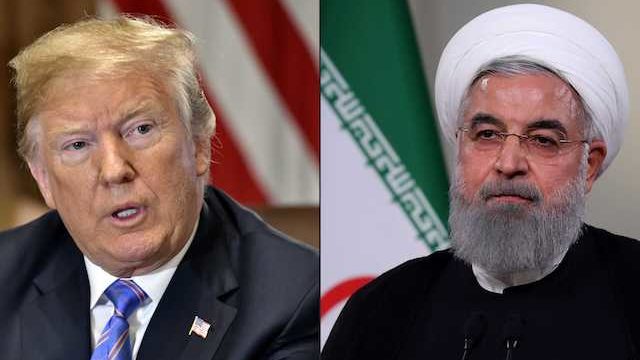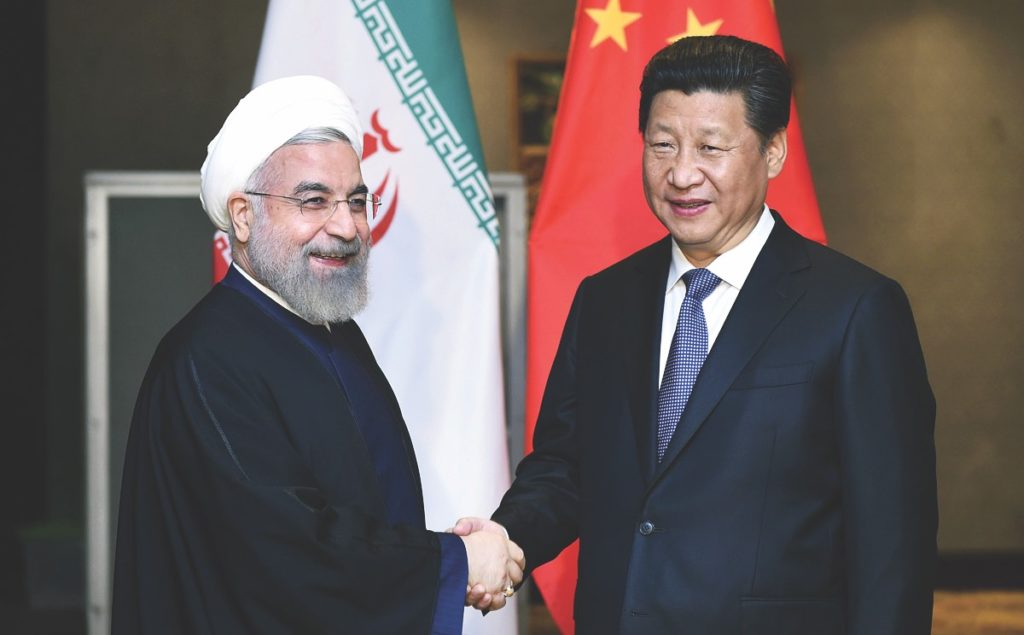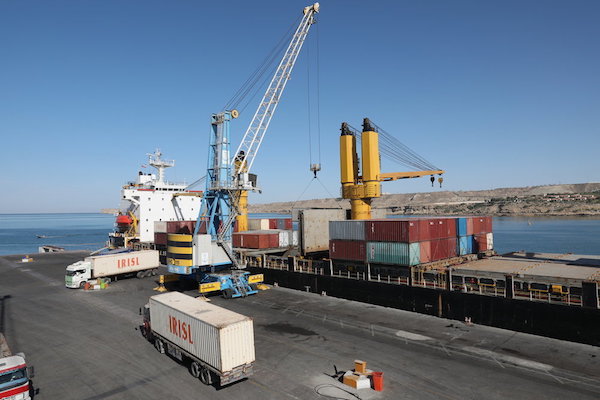Chabahar is turning out to be Delhi’s Waterloo. Lack of policy consistency, moonlighting with the United States and a Jadhav-jaundiced faux pas has cost it quite dearly.
The India-Iran calculus has gone wrong. It is not paying dividends. Tehran had reasons to be skeptical of New Delhi’s off and on somersaults, especially during the last two decades, and it now seems to have made a Hobson’s choice. India, after having wronged many of its immediate neighbours, is in a wondering phase as how the litmus of cooperation and building infrastructure on the southern coast of Iran, including an upcountry railway link transcending Afghanistan has just slipped out of its hands.
It is a serious moment of introspection for India. The setback for Delhi is that Tehran has shunted it out of the ambitious 628-kilometre railway link project and the country has also apparently lost the deal on digging a gas field in Farzad. Though India is still in as far as the Chabahar Port construction is concerned, it has lost the clout with Iran, and is in a wild guessing game as it rebalances its strategic and geo-economic priorities in the region.
Let’s take a cursory look at the balance-sheet of trials and tribulations. The two countries were very close until 2005 as they shared a common vision on geopolitics, especially in the Afghanistan context. Keeping the Taliban at bay was a cornerstone of their foreign policies, and the intention at the back of the mind was to contest Pakistan’s inherent influence in the civil-war stricken country. Their unflinching support to the Northern Alliance under Ahmad Shah Masood and Rashid Dostum was a case in point.
At the same time, India was obsessed with the desire to ally itself with the United States in pursuit of its regional hegemonic designs. That connotation was apparently responded by Washington with a precondition, calling upon Delhi to distance itself from the Revolutionary Regime in Tehran.

As a quid pro quo, India and the US went ahead to finalise a long-pending nuclear deal, which not only ended Delhi’s international nuclear isolation, but also literally brought to an end the prevailing harmony with Iran. India frequently voted against Iran at the International Atomic Energy Agency (IAEA) forum. Delhi had made a choice, and it was too late for any kind of damage-control exercises.
Indo-Iran relations, thus, were in a bickering mode until the setting in of President Barack Obama administration, as Washington took a leap forward with Tehran in an attempt to mend fences. The agreement known as the Joint Comprehensive Plan of Action which ended sanctions against Tehran came as an opportunity for India to sail back towards Iran.
The rest is current history. India bagged the Chabahar project which was exempt from US sanctions and also became Iran’s second-largest oil recipient on extraordinary easy terms.
The memorandum of understanding in 2016 to construct the 628-km railway line from the port city of Chabahar to Zahedan – and later extend it up to Afghanistan was part of a trilateral agreement between India, Iran and Afghanistan. In other words, it was a convenient transport corridor for India to Afghanistan through the Chabahar port.

The smooth-sailing, nonetheless, wasn’t there for good. President Donald Trump in 2017 unilaterally abrogated the nuclear deal with Iran. This left India once again in a lurch. Delhi couldn’t recast its priorities and caved in to American pressure, once again. This brought an end to imports from Iran, and the supplementary projects linked with Chabahar were put on the backburner.
The purported personal chemistry between President Trump and Prime Minister Narendra Modi, nonetheless, was a non-starter. Modi’s ‘Bear Hug’ was a mere photo-opportunity! Sooner than later, the outcome was a ruptured trade agreement, coupled with Washington’s termination of India’s preferential trade status.
The million-dollar question is why did India backtrack with Iran? Delhi’s rejoinder is worth analysing, too. It says it went ahead with the Chabahar Port as the project enjoyed immunity from sanctions. Yet, it says it didn’t want to burn its fingers when it came to reconciling national interests with regional designs!
India says Tehran’s insistence on getting Khatam Al-Anbiya constructions which belong to Iran’s Islamic Revolutionary Guard Corps (IRGC), involved in the railroad project is untenable. It could have brought in more miseries to domestic Indian firms by virtue of lingering blanket sanctions on whoever conducts business with banned Iranian entities. This consideration resulted in snags and an ultimate meltdown.
Here is a déjà vu when one recalls a similar setback that Pakistan came to experience at the hands of US slapped sanctions. The ambitious 2700-km long $7.5 billion (estimated cost 20 years ago) Pakistan-Iran Gas Pipeline project is yet to see the light of the day.
Had India exhibited its farsightedness, it could have won it high moral ground in relations with Iran. It failed to do the tricky balance between the US and Iran. A cold shoulder at that point of time led Tehran to rethink its priorities vis-à-vis India and it has now found a more endurable ally, China!
Iran’s decision to call it a day wasn’t out of the blue. India had adopted a ‘go-slow’ mode since 2012, obviously fearing the backlash of sanctions against Iran. Similarly, India’s IRCON which was working with Iran’s CDTIC under the Ministry of Railways on the feasibility of the railroad project also went in a low gear for reasons of political exigency. Services to be provided by IRCON included financing the superstructure estimated around $1.6 billion.
Iran now officially says that it would develop the Farzad-B gas field in the Gulf region “on its own”, and has allocated a staggering $400 million from its state-controlled National Development Fund. The field possess 21.7 trillion cubic feet of natural gas reserves. Ironically, the field was discovered in 2008 by a consortium of three Indian companies ONGC, Oil India Limited and Indian Oil Corporation. But a myopic and wobbling Indian foreign policy had earned its commercial entities a bad name, too.
India’s Ministry of Economic Affairs’ statistics say that during the first five months of 2020, India’s exports to Iran declined and hit their lowest ebb of $808 million. The figure in the previous year was over $2 billion.
Thus, the curtain came down. India was ‘courteously’ shown the door with a promissory note to consider its services again, if need be! That was too polite of Persian politics! (Nashishtam, Guftam, Barkhastam Meeting, Talking and Dispersing!)

What’s next? The trajectory of dependency and backlash has brought in a new player. China has stepped in to not only fill the void but also to grab an undeniable opportunity to lead from the front. A point of coincidence between Iran and China is that they look from the same prism when it comes to regional suzerainty.
While both the countries are on the receiving end from the Trump administration, Machiavellianism has brought them closer. China has given a tough time to the US by drawing a curve of encirclement from South China Seas up to the Pacific Rim, apart from keeping the Wall Street bogged down in a pestering trade war. Tehran too is unrelenting and is eager to strike new accords with allies such as Russia, China, Europeans and even the Arab adversaries — to save its skin from Uncle Sam.
In the wake of such revulsions, there is news of a gigantic agreement between Iran and China in their economic and defence spectrums to the tune of $400 billion. It is estimated that $280 billion will go to oil and gas sector and the remaining $120 billion to other core sectors of the Iranian economy. This 25-year agreement could be termed as the New Deal of Asia, as it possesses all the tools to limit American aggrandisement.
China’s inching towards Iran could not have come at a more opportune moment. Tehran’s Eastern allies had largely failed it. Apart from India, South Korea and Japan want to be seen in the American camp. Seoul is reportedly adopting delaying tactics in paying an oil bill worth $7billion. Likewise, Tokyo is with a wish-list of its own, as it tries to balance out with Washington.
The salient features of the agreement say that China would buy Iranian oil at reduced rates for 25 years and build infrastructure projects in Iran, including the railway network connecting the southeast coastal state with Afghanistan and up to Central Asia. There are also plans to cooperate in intelligence sharing, and invest in armaments.
India is an immediate casualty of the new Sino-Iran accord. It gives Beijing an important foothold in the region and corresponds with its ambitious Belt and Road Initiative. The good point is that now China has two allies in the form of Pakistan and Iran to further its global development strategy to build ports and massive infrastructure projects. And this comes at the time when India is engaged with China on the Line of Action (LAC) – thus, further marginalising Indian influence in the region.
It should also be kept in mind that China’s frequenting through Iran down towards Chabahar is a parallel route to CPEC via Pakistan. It comes as a bonanza economic reward for China. Likewise, Tehran and Islamabad’s gravitation towards Beijing is natural, as they struggle to come out of economic stagnation.
Last but not the least, China is proactively engaged in Afghanistan, too. With the political courtesies of Tehran and Islamabad, a cordial political order in Kabul that ensures harmony and peace could be on the cards. Pakistan and Iran are already engaged in talks at the military and diplomatic levels, to realise the dream of an irritant-free Afghanistan. Doling in of Chinese investment – across the region — will act as a catalyst in institutionalising peace. Between 2005 and 2019, China had invested over $55 billion in the Middle East and North Africa, and a staggering $60 billion in the CPEC dream project.
The trilateral military exercises in 2019 between Iran, China and Russia in the Gulf of Oman hint at a dynamic shift. Iran has made its influence felt in Yemen – through its proxy Houthis and across the Straits of Hormuz. Tehran’s military alliance with Russia in its earnest desire to liberate Syria from the ISIS clutches and retain a road-nexus up till Beirut has unnerved the Americans and Arabs. In terms of real-politick, it is beginning of a new anti-American nexus in Asia, Middle East and Africa termed as the New Eurasia.

The biggest upset is yet to come! India is still managing operations at Chabahar Port. But if China takes over those functions by virtue of its increasing influence in Iran then Chabahar could also be seamlessly integrated with Gwadar, the port next-door China is building in Pakistan’s south-western Balochistan province, which has more strategic dept and bay area than Chabahar.
India, in this context too, stands as the only strategic loser. It has a lot to blame itself as it chose to flex muscles always at the wrong time, and at the wrong place! Be it Pulwama, Galwan or the back-footing on Chabahar.
So what remains of Indo-Iran defence cooperation? To be candid, it is no less tormenting. Since the days India bid farewell to its policy of Non-Alignment in the early 1970s, it always nursed expansionist designs and wanted to please both the Muslim world as well as befriend Israel. Likewise, it was supposedly in the Russian camp but never left any stone unturned in obliging the United States. Similarly, not to underrate the slogan of ‘Hindi-Chini Bhai Bhai’ (Indians and Chinese are brothers). This dichotomy was at the back of its mind as India rewrote a new chapter of relations with Iran. The intention was to browbeat Pakistan’s interests in the region, especially in Afghanistan.
The turning point in Indo-Iran defence cooperation was the visit of President Syed Mohammed Khatami to New Delhi in 2003 as the chief guest on India’s Republic Day. While showcasing its military might, Delhi struck a deal with Tehran. The most startling aspect of the accord was “collaboration in third countries” a clear reference to Afghanistan. Cooperation in sea lanes, joint naval exercises and establishment of joint working groups on counter-terrorism and counter-narcotics were other salient features of the understanding.
Apparently, this is where India stretched itself and misused Iranian territory to realise its nefarious designs against Pakistan. Resultantly, Pakistan’s Balochistan province, especially, became a breeding ground for cross-border insurgents and terrorism took a spike. This development was supplemented with the fact that Kabul and Delhi were interwoven in a powerful intelligence sharing accord, and the Afghan intelligence was at the beck-and-call of Delhi.

The Jadhav Jaundice! Thus, it won’t be out of context to study Kulbushan Sudhir Jadhav alias Hussain Patel, a ‘retired’ Indian Naval Services official hobnobbing in the south-eastern coast of Chabahar for ulterior purposes. India acknowledges him as a ‘legitimate businessman’ in the Iranian port city. However, a curious glance at media reports in India, immediately in the wake of Jadhav’s arrest in 2016 in Pakistan’s Balochistan, confirmed that he was an ‘asset of Indian intelligence’. But since then a silence of the lambs haunts Indian media, and the reports have been taken down.
Surprisingly, a section of the Indian Press had also reported that Jadhav “offered’’ to spy for Indian intelligence “several times” between 2010 and 2012, “only to be rebuffed”. This one way or the other gives credence to Pakistan’s claims on the ‘arrested asset’. There is smoke only if there is fire!
The onus was always on Iran to come up with its own side of the story as to how an Indian citizen with dubious credentials, transgressed its sovereignty. But Tehran has preferred to remain silent to this day. President Hassan Rouhani during his visit to Islamabad in 2016 was non-committal. Perhaps, the Iranians were severely disappointed with the Indians over the ‘espionage episode’ going on right under their nose and on their soil! The mastery of Iranian diplomacy was in playing safe — and keeping silent. But as they say, actions are more powerful than words, India’s ultimate drop-out from south-eastern Iran is no less than a diplomatic fiasco.
India’s loss of leverage over Iran is unnerving. It’s time for Delhi to recast its priorities. Its obsession to take on Beijing and at the same time act as a darling for Washington has cost its prestige at home and abroad. The Diaspora in the West and the affluent Indians in Africa cry for the good old days of Non-Alignment, and Delhi’s once cordiality in the Muslim world. India’s policy to alienate its neighbours and meddle around has poisoned the region. It is in need of an antidote.




